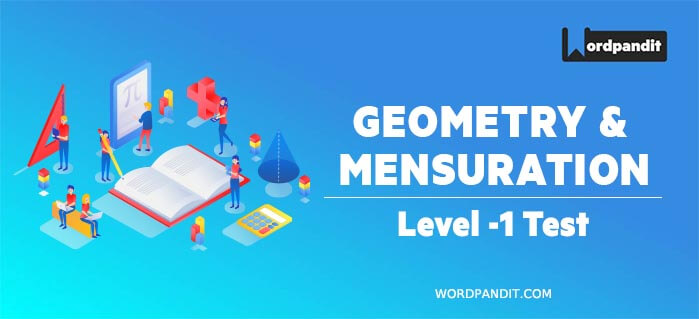- This is an assessment test.
- To draw maximum benefit, study the concepts for the topic concerned.
- Kindly take the tests in this series with a pre-defined schedule.
Geometry and Mensuration: Level 1 Test 7
Congratulations - you have completed Geometry and Mensuration: Level 1 Test 7.You scored %%SCORE%% out of %%TOTAL%%.You correct answer percentage: %%PERCENTAGE%% .Your performance has been rated as %%RATING%%
Your answers are highlighted below.
Question 1 |
The area of the largest circle that can be drawn inside a rectangle with side 18 cm and 14 cm is
49 cm2 | |
154 cm2 | |
378 cm2 | |
1078 cm2 |
Question 2 |
Three identical cones with base radius r are placed on their bases so that each in touching the other two. The radius of the circle drawn through their vertices is :
Smaller than r | |
Equal to r | |
Larger than r | |
Depends on the height of the cones |
Question 2 Explanation:
$ \displaystyle \begin{array}{l}The\text{ }length\text{ }of\text{ }the\text{ }side\text{ }of\text{ }the\text{ }equilateral\text{ }triangle\\formed\text{ }by\text{ }joining\text{ }the\text{ }center\text{ }of\text{ }the\text{ }bases\text{ }of\text{ }the\text{ }cones\text{ }=\text{ }2r\text{ }units.\\The\text{ }radius\text{ }of\text{ }the\text{ }circle\text{ }drawn\text{ }through\text{ }the\text{ }vertices\\\text{ }is\text{ }actually\text{ }the\,\,2/3\text{ }of\text{ }the\text{ }altitude\text{ }of\text{ }the\text{ }triangle\text{ }\\=~\frac{\frac{2}{3}\times \sqrt{3}}{2}2r\,\,=\,\,\frac{2\times 1.7}{3}r>r\\Thus\text{ }correct\text{ }option\text{ }is\text{ }\left( c \right)\end{array}$
Question 3 |
A conical vessel of base radius 2 cm and height 3 cm is filled with kerosene. This liquid leaks through a hole in the bottom and collects in a cylindrical jar of radius 2 cm. The kerosene level in the jar is
∏cm | |
1.5 cm | |
1 cm | |
3 cm |
Question 3 Explanation:
$ \displaystyle \begin{array}{l}The\text{ }kerosene\text{ }level\text{ }=\text{ }height\text{ }of\text{ }the\text{ }cylinder\text{ }\left( liquid\text{ }level \right)\\\frac{1}{3}\times \pi \times {{\left( 2 \right)}^{2}}\times 3=\pi \times {{\left( 2 \right)}^{2}}\times h\\\Rightarrow \,\,h=1\,\,cm\end{array}$
Question 4 |
The diameter of hollow cone is equal to the diameter of a spherical ball. If the ball is placed at the base of the cone, what portion of the ball will be outside the cone?


50% | |
Less than 50% | |
More than 50% | |
100% |
Question 4 Explanation:
The diameter of both the shapes is same and thus we can conclude that for a height of the radius of the sphere the volume of the cone is always less than the sphere.
Thus the sphere will remain outside the cone by more than 50% always.
Thus the sphere will remain outside the cone by more than 50% always.
Question 5 |
The diagonals of a rhombus are 24 cm and 10 cm. Its area is
240 cm2 | |
312 cm2 | |
130 cm2 | |
120 cm2 |
Question 5 Explanation:
$ \displaystyle The\text{ }area\,=\frac{24\times 10}{2}=120\,\,c{{m}^{2}}$
Once you are finished, click the button below. Any items you have not completed will be marked incorrect.
There are 5 questions to complete.
List |












